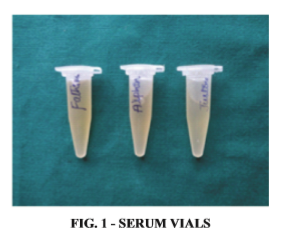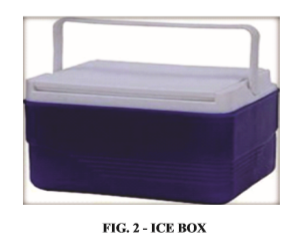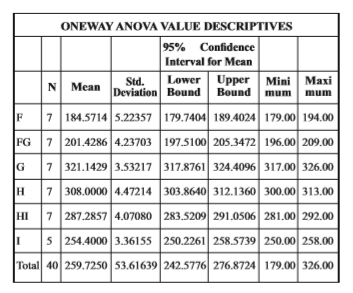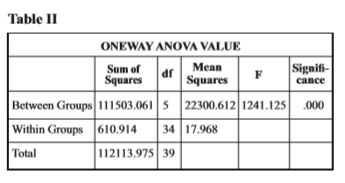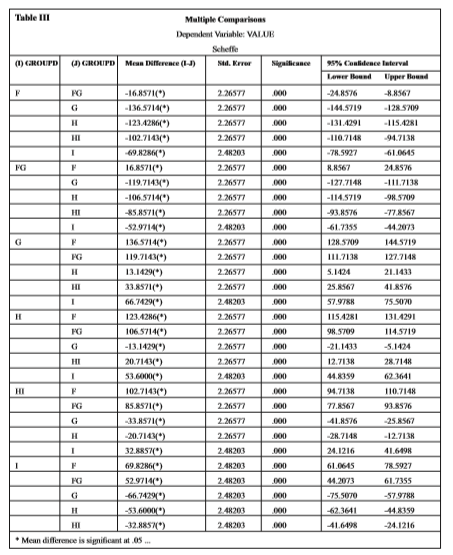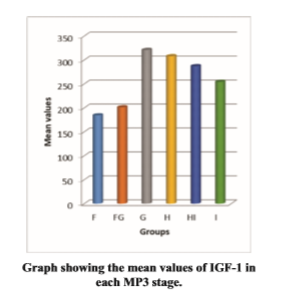

Journal of Multidisciplinary Dental Research
DOI: 10.38138/JMDR/v5i1.4
Volume: 5, Issue: 1, Pages: 22-27
Original Article
Sunil Muddaiah1, Sajai Bharath V.U2, Goutham B3, Suhailuddin4, Vikram Susil5, Namitha Nanu6
1Dean, Coorg Institute of Dental Sciences, Virajpet
2Reader, KMCT Dental College, Calicut
3Professor & Head, Coorg Institute of Dental Sciences, Virajpet
4Reader, Coorg Institute of Dental Sciences, Virajpet
5Sr Lecturer, Coorg Institute of Dental Sciences, Virajpet
6Sr Lecturer, Coorg Institute of Dental Sciences, Virajpet
Corresponding author:
Sunil Muddaiah
Department of Orthodontics, Coorg Institute of Dental Sciences
Maggula P.O. Virajpet 571218, Karnataka, India.
Phone number: 09448113013
E-mail address: [email protected]
Received Date:10 February 2019, Accepted Date:20 March 2019, Published Date:30 March 2019
Context:
The clinical importance of evaluating skeletal maturation has long been recognized by the health professions. Skeletal maturation is an integral part of individual patterns of growth and development.
With many orthodontic patients, pubertal growth needs to be factored into the diagnostic equation.
Accurate prediction of the timing of the pubertal growth spurt and the amount of remaining growth affects the treatment decisions in orthodontics, orthognathic surgery and dental implantology.
IGF-1 mirrors growth hormone levels. Thus, IGF-I might be a good indicator of residual mandibular growth.
Aims:
Methods and Material:
The sample size consisted of 40 subjects between the age group of 5 – 25 including both the sexes. The periapical radiographs for MP3 and blood sample for IGF-1 was collected. Sample was sent to the lab to determine IGF-1 values.
Statistical analysis used:
Descriptives, ONE way ANOVA, POST HOC test, Spearman coefficient.
Results:
Results showed that IGF-1 levels at the peak pubertal growth were statistically higher than the start of pubertal growth, acceleration, deceleration, maturation of growth spurt and on completion of growth. There was statistically significant positive correlation between IGF-1 and MP3 stages.
Conclusions:
From the present study it can be concluded that IGF-1 can be successfully used as a skeletal maturity indicator.
Key-words: IGF-1, MP3, GH
Key Messages:The results of this study shows that mean IGF-I levels at pubertal and post pubertal stages were significantly higher than at the other stages. From the present study it can be concluded that IGF-1 can be successfully used as a skeletal
Health professions have recognized the clinical importance of evaluating skeletal maturation which is an integral part of individual patterns of growth and development. Skeletal maturation is an integral part of individual patterns of growth and development. 1A critical variable in orthodontic treatment is the growth factor. Treatment plan can change from orthognathic surgery to extraction to non-extraction, based on the growth factor2. IGF-I plays an important role in systemic and local regulation of both prenatal and postnatal longitudinal bone growth3. IGF-1 mirrors growth hormone levels. Thus, IGF-I might be a good indicator of residual mandibular growth4.
AIMS
Subjects and Methods:
The sample size consisted of 40 subjects. The subjects were selected from patients reporting to Department Of Orthodontics and Dentofacial Orthopaedics, Coorg institute of dental sciences, Virajpet. The subjects were those who were seeking orthodontic treatment, patients undergoing active orthodontic treatment or those who visit for post orthodontic follow up.
Inclusion criteria
Exclusion criteria included patients suffering from
Random sampling technique was employed.
Procedure:
The study sample included patients who reported for a minimum period of 6 months to the department of orthodontics. A thorough history was taken before selecting the subjects regarding their age, pubertal status and history of bleeding disorders. A standard dental radiograph (Kodak E-speed film 32mmX41mm) of the MP3 (middle phalanx of the middle finger) will be taken. The periapical radiographs of the middle phalanx of the middle finger was examined and staged according to stages described by Kansal and Rajgopal.
Blood sample was collected for IGF-1. Serum was centrifuged and separated from the blood
samples and was transported in serum vials (fig.1) on the same day of collection in an ice box (fig.2) to the lab for enzyme immunoassay. The patients and parents were requested to sign consent forms.
The MP3 staging were originally described by Hagg and Taranger. In the present study MP3 radiographs were staged by using the 6 stages described by kansal and Rajgopal Based on the staging the first stage was considered the start of pubertal growth. The second stage is an acceleration of pubertal growth spurt. The 3rd stage is when there is a maximum point of pubertal growth spurt. The 4th stage is a deceleration of the pubertal growth spurt. In the fifth stage there is a maturation in the pubertal growth spurt. The sixth stage shows an end in pubertal growth spurt.
Statistical methods applied:
Descriptives, one way ANOVA and Post-Hoc tests using SPSS for windows software.
Results:
Table I
Table I shows the mean value of IGF-1 for each MP3 stages.
Table II (one way ANOVA values) and Table III(Post-Hoc analysis) shows the difference between the groups and within the groups which is statistically significant.
IGF-1 levels at the peak pubertal growth were statistically higher than the start of pubertal growth, acceleration, deceleration, maturation of growth spurt and on completion of growth.
Discussion :
The factors that play a major role in treatment planning and retention in orthodontics are the timing of treatment and the amount of facial growth remaining. So it is very important to determine the biologic maturation level and growth potential
during preadolescence and adolescence. Other factors like chronologic age, menarche, dental development, body weight, voice and breast changes are shown to be unreliable and impractical for estimation of pubertal growth spurt. Insulin-like growth factor I (IGF-I) is a polypeptide hormone synthesized mainly by the liver. It is a member of a group of hormones termed insulin-like growth factors which are considered as mediators for function of growth-hormone. It plays a major role in postnatal growth and precisely in the growth of longitudinal bone4.
IGF-1 levels are shown to be dependent on growth hormone before puberty. However, IGF-1 levels can also be independent of growth hormone during puberty as their production can be directly stimulated by androgens. Recent literature has shown the sensitivity of condylar cartilage to changes in IGF-1 concentrations. Therefore, Endocrinologists have been using IGF-1 levels to diagnose growth hormone disturbances. Chronologic age and sexual maturity stages have also been related to Serum IGF-1 levels showing their peak late in puberty. This peak is mainly due to the stimulation of growth hormone secretion by adrenal and gonadal steroids5.
Remaining pubertal growth can be assessed throughout treatment using simple periapical xrays, obliterating the need for lateral cephalograms or hand-wrist x-rays. Periapical x-ray films can be a simple and accurate economic growth indicator for recording modified MP3 stages.
Advantages of the modified MP3 stages include:
Taking into account the importance of IGF-1 as a growth hormone mediator and the easy accessibility and reliability of MP3 radiograph, the present study was done to assess the relationship between the both in predicting skeletal maturity.
Interpretation of the result
The data in this study shows that IGF-I levels are low at the prepubertal stages of MP3 development. There was a sharp increase in IGF-I levels from FG to peak levels at H, whereas there was a decline between H and I. Mean IGF-I levels at G and H were significantly higher than at the other stages.
This is consistent with previous studies that showed that IGF-I levels peak in late puberty. The descriptive statistical analysis shows mean value of IGF-1 at F stage is 184.57ng/ml which peaked at G and H stages with 321.14ng/ml and 308ng/dl respectively which shows a decline towards completion of growth with I stage showing 254ng/dl ( Table 1 ).
1-Way ANOVA analysis and Post Hoc analysis shows that there is a statistically significant difference between the groups with P < 0.001( Table II & III ).
This graph shows that IGF-1 levels were higher at G and H stages when compared to the other stages. This demonstrates that increased IGF-1 levels were seen at pubertal and post pubertal stages of growth.
It was inferred from the study that
Clinical implications
The driving force in the quest for the most accurate and least invasive methodology to track pubertal growth spurt is the importance of growth determination. Other factors like chronologic age, menarche, dental development, body weight, voice and breast changes are shown to be unreliable and impractical for estimation of pubertal growth spurt. Skeletal growth changes during puberty are correlated with skeletal age assessments using hand-wrist and lateral cephalometric radiographs. The most reliable skeletal maturation indicator is the hand-wrist maturation indicator. However an alternative method to detect pubertal growth-spurt timing are IGF-I blood levels. It was concluded that the mandibular growth velocity pattern proposed by Fishman et al mirrored mean IGF-I levels at various skeletal stages.
The major disadvantage of hand-wrist radiographs and cervical vertebral staging is that the final stage does not necessarily indicate the completion of growth along with radiation exposure and staging of the x-rays. The results of this particular study showed that IGF-I is a good indicator for predicting skeletal maturity.
Muddaiah S et al., Assessment of Relationship Between Insulin-Like Growth Factor- 1 Levels And Mp3 Radiographs in Determining Skeletal Maturity.2019:5(1);22-27
Subscribe now for latest articles, news.

